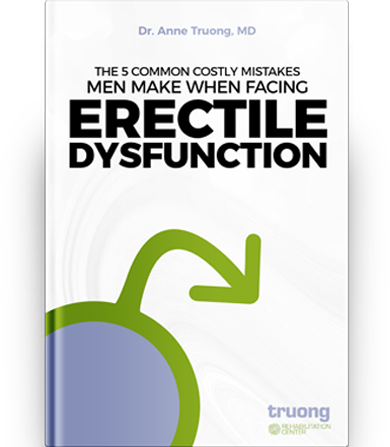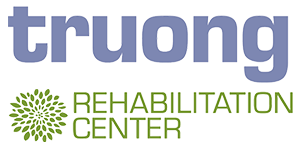Bioidentical hormone replacement therapy (BHRT) is gaining popularity for addressing age-related hormonal imbalances. In Virginia, hormone replacement therapy offers a natural approach to replenishing the body’s declining hormone levels. Unlike synthetic hormones, bioidentical hormones are chemically identical to those produced by the body, making them more compatible and effective. For individuals seeking a more personalized treatment plan, BHRT can restore balance, improve quality of life, and alleviate symptoms like fatigue, mood swings, and decreased libido.
As medical innovations progress at an unprecedented rate, the number of conditions which were previously thought to be incurable continues to dwindle. On that note, the bioidentical hormone replacement therapy (BHRT) is another paradigm-shifting procedure which has generated a lot of interest in recent years.
Bioidentical Hormones: What are they?
Hormones are chemical compounds which essentially facilitate all major bodily functions. Consider them, if you will, as chemical messengers that serve as the human body’s internal communication system. These chemicals are formed and secreted by a set of organs collectively known as glands, and the whole network is called the endocrine system.
Hormones regulate almost every task carried out by the human body, from appetite, digestion, brain function, certain sensations, and even libido.
So, when one or more hormones start to act out of their range, problems abound, often at an alarming scale for the individual concerned. That is where BHRT comes into the picture.
Also known as natural hormone therapy, BHRT refers to replenishing human-made hormones in the body, which are almost a copy of the naturally produced hormones. The artificially induced hormones are near-identical to natural hormones at a molecular level.
Now, the term ‘natural’ has been a bone of contention between different researchers. Technically speaking, any product which features plant, animal or mineral source as its primary component is considered as natural. Most people imagine that natural equals healthy, but that assumption is not necessarily correct.
Regardless, it was a breakthrough discovery in medical science and has been used to varying effects on a large number of patients looking to allay symptoms of hormonal imbalance.
BHRT is most widely used to diminish the symptoms of menopause and perimenopause in women. It has also been used in treating the symptoms associated with chemotherapy and several other ailments such as insulin resistance, osteoporosis, adrenal disorder, hypo and hyperthyroidism, and fibromyalgia.
Although the full gamut of the advantages and pitfalls of BHRT is yet to be established, it has already become an extremely popular form of treatment, especially for women trying to alleviate the symptoms of menopause. According to a report by the North American Menopause Society (NAMS), there are over 1.4 million women who are actively participating in these treatments, even if not all of them are FDA-approved.
A brief history of hormonal replacement
Hormone replacement is not a new phenomenon. It has been around for the better part of the previous century. James Collip, a Canadian bio-researcher, is credited with the development of the first supplemental hormone after he extracted estrogen from the treated urine of a pregnant woman. It was integrated as the primary ingredient in a drug called Emmenin.
Later, in 1941, they developed an easier method of manufacturing conjugated estrogens and marketed the new product with the name, Premarin. It was a runaway success, and even after 50 years of its development, it remained the most prescribed drug in the US until 1992.
The small hiccup came in the 1970s when researchers found the risks of prolonged use of synthetically conjugated estrogens. The solution was found to be the addition of progestogen, as recommended by the British Medical Journal in 1980.
Since then, the process improved by multiple researchers such as Jonathan Wright and John R. Lee, both of whom are considered pioneers in the field. Mr. Lee, an American researcher, has authored multiple books where he propagated the use of custom-compounded BHT, which he said would help the body achieve ‘natural hormone balance.’ He famously called BHT as a panacea, but this claim was never formally substantiated with peer-reviewed research.
Jonathan Wright, on the other hand, was a strong proponent of combining all three common estrogens found in the human body, i.e., estradiol, estriol, and estrone, instead of the prevalent method of using only estradiol.
He might also have been the first person to use the term ‘bioidentical,’ implying that these artificially created hormones are structurally indistinguishable from naturally produced hormones. However, no structural crystallographic tests have been able to confirm this statement yet.
Components
There are only a handful of pharmaceutical companies that manufacture bioidentical hormones. These hormones are not found in their usable form in nature; they are typically synthesized from chemicals extracted from soy and yams.
The most common forms of bioidentical hormone preparation, apart from the already mentioned estriol, estradiol and estrone, are testosterone, dehydroepiandrosterone (DHEA) and progesterone.
Estrogen is, without any speck of doubt, the most commonly synthesized hormone worldwide. In women who haven’t achieved menopause, estradiol is the most produced hormone in the body; post-menopausal women generate more estrone. Estriol, on the other hand, is produced when a woman is pregnant. Estriol is also the most widely synthesized bioidentical hormone, although it’s still not approved by the FDA. However, it’s free to use in the European Union countries.
Another widely used bioidentical hormone is progesterone, which the FDA approves for the treatment of endometrial hyperplasia. It is also commonly used to treat the early symptoms of menopause, often in combination with an estrogen.
Testosterone is also used by postmenopausal women to enhance libido, although it’s not found readily. Estratest, a product made by synthesizing testosterone and estrogen is a more prevalent alternative.
Compounding
When drug companies synthesize a particular combination of hormones according to a prescription, it is known as compounding. Compounded hormones are considered safer and more efficient than synthetic ones, but the FDA cautions that these claims are unsubstantiated as they haven’t been proved or disproved by any legitimate studies.
This widespread misconception stems from the logic that anything custom-made is necessarily better. Think tailor-made suits!
However, that’s not always the case, although many doctors prescribe compounded hormones to treat various symptoms. They may undoubtedly prove to be more beneficial in certain circumstances as the treatment is individualized.
Traditional vs bioidentical
There is a raging debate regarding whether bioidentical hormones are better than conventional synthetic hormones such as medroxyprogesterone (MPA) and conjugated equine estrogens (CEE).
In a paper published in the National Center for Biotechnology Information (NCBI), dated January 2009, the researchers claim that bioidentical products have a very different, sometimes diametrically opposite, psychological effect compared to synthetic ones.
Progesterone, for example, is associated with a lower risk of breast cancer when compared to synthetic progestins. There are also other cardiovascular risks related to progestins which are absent with the use of progesterone.
Let’s take another example- CEE, which is extracted from the urine of pregnant horses. CEE converts into human estrogen after it enters the body, and that too not entirely. The residual, unconverted hormones are absorbed in the bloodstream and may cause adverse side effects.
In conclusion, although bioidentical hormones are associated with lower risks compared to synthetic preparations. BHRT will remain the more popular method for hormonal replacement.
BHRT preparation and delivery
Typically, the chemical precursor of bioidentical hormones, diosgenin, is sourced from soy and yam extracts, which is converted to progesterone. Progesterone is then used as a hormonal chemical precursor to the ultimate product.
Bioidentical hormones can be administered using various methods including:
- Injections
- Pills
- Creams
- Gels
- Patches
Is BHRT safe?
Back in 2002, the Women’s Health Initiative (WHI) began conducting a clinical trial on postmenopausal women with a combination of estrogen and progestin (placebo). Both of these are non-bioidentical hormones, but the trials had to be stopped midway as the women started to experience discomfort, and even more severe side effects such as strokes, breast cancer and blood clots.
The WHI study was widely cited in medical circles and the search for a viable alternative intensified.
Then, there is the matter of side-effects, which usually occur after the first dose is administered. In some ways, these side effects are expected as the human body takes some time to adjust to new hormones. In most cases, these side effects subside within the first few weeks.
Common side-effects include:
- Excessive weight gain.
- Chronic tiredness.
- Increased facial hair in women.
- Tenderness of the breasts.
- Mood swings.
- Blurred vision.
- Indigestion.
- Recurring headaches.
Who should take BHRT?
Regardless of the risks associated with BHRT, its benefits are too immense to ignore. You should consider undergoing this therapy if:
- You experience severe menopausal symptoms such as hot flashes and vaginal dryness.
- You have lost significant bone mass, and other forms of treatment have proven ineffective.
- You suffer from premature menopause or ovary function (before 40 years).
Premature menopause, in particular, is a cause for concern as it may lead to osteoporosis, Parkinsonism, depression, and cardiovascular dysfunctions. In such cases, the benefits of BHRT far outweigh the associated risks.
In conclusion, the efficacy of hormonal therapies depends in no small measure on the right dosage as well the method of composition of those hormones. Since bioidentical hormones are not regulated by FDA, most doctors use it as a last resort of sorts.
However, absence of evidence should not be considered as evidence of absence in this scenario. You will found countless testimonials of how BHRT has changed the lives of women for better.
One thing is certain – until any conclusive study is conducted and its benefits/pitfalls are established, BHRT shall remain a popular choice of treatment for menopausal women.
Reference links –
https://en.wikipedia.org/wiki/Bioidentical_hormone_replacement_therapy
https://www.healthline.com/health/bioidentical-hormone-replacement-therapy#takeaway
https://www.health.harvard.edu/womens-health/what-are-bioidentical-hormones
https://my.clevelandclinic.org/health/articles/15660-bioidentical-hormones
https://www.mayoclinic.org/diseases-conditions/menopause/expert-answers/bioidentical-hormones/faq-20058460
https://www.ncbi.nlm.nih.gov/pubmed/19179815











